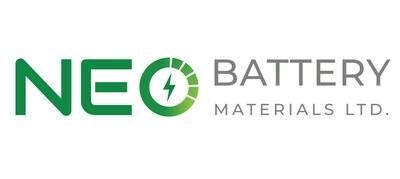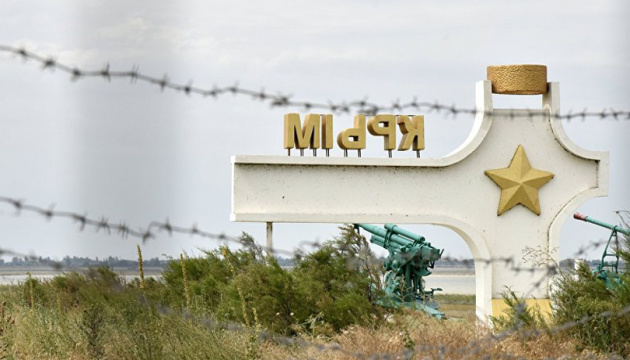Fluence and AGL sign deal to deliver the 500 MW / 2000 MWh Tomago Battery Energy Storage System in Australia – GlobeNewswire

Project Report: Tomago Battery Energy Storage System and Alignment with Sustainable Development Goals
1.0 Executive Summary
This report details the selection of Fluence Energy, Inc. by AGL to deliver the 500 MW / 2000 MWh Tomago Battery Energy Storage System (BESS) in Newcastle, New South Wales. The project represents a significant milestone in Australia’s energy transition, directly contributing to several United Nations Sustainable Development Goals (SDGs), particularly SDG 7 (Affordable and Clean Energy), SDG 9 (Industry, Innovation, and Infrastructure), SDG 11 (Sustainable Cities and Communities), and SDG 13 (Climate Action). The collaboration exemplifies SDG 17 (Partnerships for the Goals), leveraging global expertise to build resilient, sustainable infrastructure.
2.0 Project Details and Strategic Significance
2.1 Project Specifications
- Project Name: Tomago Battery Energy Storage System (BESS)
- Capacity: 500 MW / 2000 MWh
- Location: Newcastle, New South Wales, Australia
- Key Partners: AGL (Client), Fluence Energy, Inc. (Technology and Service Provider)
- Technology: Fluence Gridstack Pro
 with grid-forming capabilities
with grid-forming capabilities
2.2 Strategic Importance
- The project is Fluence’s largest global transaction and one of the most substantial energy storage systems in the Australian National Energy Market (NEM).
- It marks a cumulative 5 GWh of Fluence projects in Australia, underscoring the nation’s rapid progress towards renewable energy integration.
- This is the third major collaboration between AGL and Fluence, following the Broken Hill and Liddell BESS projects, indicating a strong, ongoing partnership dedicated to sustainable energy infrastructure.
3.0 Contribution to Sustainable Development Goals (SDGs)
3.1 SDG 7: Affordable and Clean Energy
The Tomago BESS is fundamental to advancing SDG 7 by enhancing the reliability and accessibility of clean energy.
- Enabling Renewables: The 2000 MWh storage capacity allows for the capture of excess energy from intermittent renewable sources (solar, wind) and its dispatch during periods of high demand or low generation, ensuring a consistent power supply.
- Grid Stability: By providing grid-forming capability, the system improves the stability and reliability of the power grid, which is essential for integrating a higher percentage of renewables without compromising energy security.
- Supporting Affordability: By firming renewable energy, the BESS helps reduce reliance on volatile fossil fuel markets, contributing to more stable and potentially lower energy costs for consumers over the long term.
3.2 SDG 9: Industry, Innovation, and Infrastructure
The project is a testament to innovation in building resilient and sustainable infrastructure, a core target of SDG 9.
- Innovative Technology: The deployment of Fluence’s Gridstack Pro
 platform represents the application of cutting-edge energy storage technology designed for utility-scale performance and flexibility.
platform represents the application of cutting-edge energy storage technology designed for utility-scale performance and flexibility. - Resilient Infrastructure: The BESS strengthens the energy infrastructure of New South Wales, making it more resilient to fluctuations and better equipped to support industrial and community needs in a future powered by renewables.
- Fostering a Green Industry: Large-scale projects like Tomago stimulate growth and expertise within Australia’s green technology and renewable energy sectors.
3.3 SDG 11 & SDG 13: Sustainable Cities and Climate Action
The project directly addresses the need for sustainable urban environments and urgent action to combat climate change.
- Sustainable Communities: A reliable, clean power grid is the backbone of sustainable cities, powering transport, housing, and essential services with a lower environmental footprint. The Tomago BESS is a critical enabler of this vision for the Newcastle region and beyond.
- Climate Change Mitigation: As a key component of Australia’s energy transition, the BESS facilitates the displacement of fossil fuel-based power generation. This leads to a significant reduction in greenhouse gas emissions, directly contributing to the goals of the Paris Agreement and SDG 13.
3.4 SDG 17: Partnerships for the Goals
The successful initiation of the Tomago BESS project is a powerful example of SDG 17 in action.
- Strategic Collaboration: The partnership between AGL, a leading Australian energy provider, and Fluence, a global market leader in energy storage technology, combines local market knowledge with international expertise to achieve shared sustainability objectives.
- Long-Term Commitment: The agreement includes not only construction but also ongoing service and maintenance, reflecting a long-term commitment to the operational success and sustainability impact of the project.
4.0 Conclusion
The AGL Tomago BESS project, delivered by Fluence, is more than a piece of energy infrastructure; it is a strategic asset for achieving a sustainable future. By significantly enhancing Australia’s capacity for clean energy, the project provides a tangible contribution to meeting global Sustainable Development Goals. It strengthens the energy grid, fosters innovation, and serves as a model for the public-private partnerships required to accelerate the global transition to a low-carbon economy.
Analysis of Sustainable Development Goals (SDGs) in the Article
1. Which SDGs are addressed or connected to the issues highlighted in the article?
- SDG 7: Affordable and Clean Energy: The core of the article is about a large-scale battery energy storage system (BESS) which is a critical technology for enabling a stable and reliable supply of renewable energy.
- SDG 9: Industry, Innovation, and Infrastructure: The project involves the construction of new, resilient energy infrastructure (the Tomago BESS) using innovative technology (Fluence’s Gridstack Pro) to support the energy industry’s transition.
- SDG 13: Climate Action: By facilitating the integration of renewable energy sources, the BESS project directly contributes to reducing reliance on fossil fuels, which is a key strategy for mitigating climate change. The article mentions supporting a “renewable energy future” and Australia’s “transition to renewable energy sources.”
- SDG 17: Partnerships for the Goals: The article highlights the partnership between two major companies, Fluence Energy and AGL, to achieve a common sustainability goal. This collaboration is essential for delivering a project of this scale and impact.
2. What specific targets under those SDGs can be identified based on the article’s content?
-
SDG 7: Affordable and Clean Energy
- Target 7.2: By 2030, increase substantially the share of renewable energy in the global energy mix. The article states the project supports AGL’s “ambitious plan to deploy large-scale battery storage systems for a renewable energy future across Australia” and accelerates the country’s “transition to renewable energy sources.”
- Target 7.b: By 2030, expand infrastructure and upgrade technology for supplying modern and sustainable energy services. The Tomago BESS is a prime example of expanding energy infrastructure with modern technology to create a “more resilient grid.”
-
SDG 9: Industry, Innovation, and Infrastructure
- Target 9.1: Develop quality, reliable, sustainable and resilient infrastructure. The article specifies that the Tomago BESS will use “Fluence’s Gridstack Pro” to “provide grid-forming capability to improve grid reliability.”
- Target 9.4: By 2030, upgrade infrastructure and retrofit industries to make them sustainable… with greater adoption of clean and environmentally sound technologies. The BESS is a clean technology being adopted to make the energy industry more sustainable, as part of Fluence’s mission to power “our world for a more sustainable future.”
-
SDG 13: Climate Action
- Target 13.2: Integrate climate change measures into national policies, strategies and planning. The project is a tangible outcome of Australia’s national energy strategy, referred to in the article as “Australia’s energy transition.”
-
SDG 17: Partnerships for the Goals
- Target 17.17: Encourage and promote effective public, public-private and civil society partnerships. The article is centered on the partnership between Fluence and AGL, noting, “We are pleased to continue our partnership with Fluence as the battery energy storage provider for the Tomago Battery.”
3. Are there any indicators mentioned or implied in the article that can be used to measure progress towards the identified targets?
-
For Target 7.2 (Increase renewable energy share):
- Indicator: Installed capacity of energy storage. The article provides specific quantitative data: the Tomago BESS (500 MW / 2000 MWh), the Liddell BESS (1000 MWh), the Broken Hill BESS (50 MWh), and the total of 5 GWh of projects by Fluence in Australia. These figures directly measure the capacity being added to support renewables.
-
For Target 9.1 (Develop reliable infrastructure):
- Indicator: Implementation of advanced grid technology. The article mentions the project will “provide grid-forming capability to improve grid reliability,” which is a specific technological function that can be measured and verified.
-
For Target 9.4 (Adopt clean technologies):
- Indicator: Scale of clean technology deployment. The size of the project, described as “one of the largest energy storage transactions by MWh in the Australian National Energy Market (NEM) to date,” serves as an indicator of the scale of adoption.
-
For Target 17.17 (Promote partnerships):
- Indicator: Number and scale of strategic partnerships for sustainable development. The article details a specific partnership between Fluence and AGL, noting it is Fluence’s “largest project transaction globally,” which indicates a partnership of significant scale. The mention of this being the “third grid-scale battery storage system Fluence will deliver for AGL” indicates an ongoing, long-term partnership.
4. Table of SDGs, Targets, and Indicators
| SDGs | Targets | Indicators Identified in the Article |
|---|---|---|
| SDG 7: Affordable and Clean Energy | 7.2: Increase substantially the share of renewable energy in the global energy mix.
7.b: Expand infrastructure and upgrade technology for supplying modern and sustainable energy services. |
Installed capacity of energy storage systems: 500 MW / 2000 MWh for the Tomago BESS; 5 GWh total for Fluence projects in Australia. |
| SDG 9: Industry, Innovation, and Infrastructure | 9.1: Develop quality, reliable, sustainable and resilient infrastructure.
9.4: Upgrade infrastructure and retrofit industries to make them sustainable… with greater adoption of clean technologies. |
Implementation of grid-forming capability to improve reliability. The scale of the project (2000 MWh) as a measure of clean technology adoption. |
| SDG 13: Climate Action | 13.2: Integrate climate change measures into national policies, strategies and planning. | The project itself is a tangible action supporting “Australia’s energy transition,” which is a national strategy. |
| SDG 17: Partnerships for the Goals | 17.17: Encourage and promote effective public-private and civil society partnerships. | The documented partnership between Fluence and AGL for three large-scale projects. The description of the deal as Fluence’s “largest project transaction globally.” |
Source: globenewswire.com

What is Your Reaction?
 Like
0
Like
0
 Dislike
0
Dislike
0
 Love
0
Love
0
 Funny
0
Funny
0
 Angry
0
Angry
0
 Sad
0
Sad
0
 Wow
0
Wow
0











































































